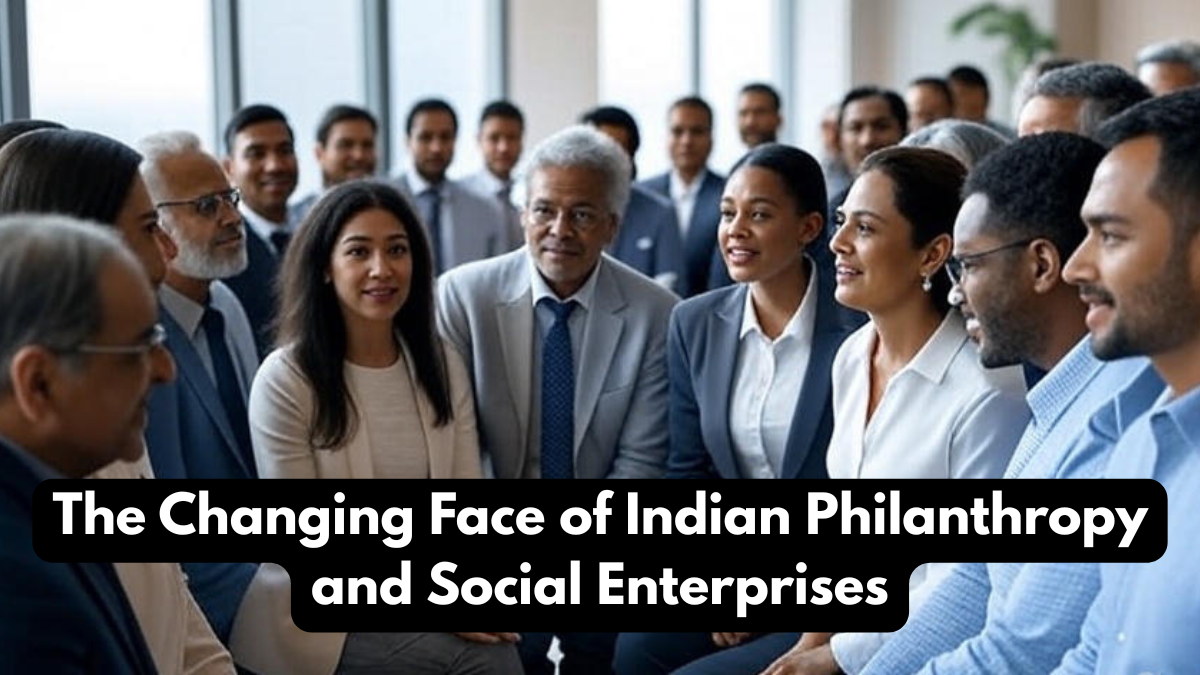Indian philanthropy has always played a significant role in supporting education, healthcare, and community development. Traditionally driven by wealthy families and religious institutions, it is now undergoing a transformation with the rise of corporate social responsibility, younger donors, and technology-driven models. What sets this new phase apart is the integration of social innovation, which combines creativity, entrepreneurship, and sustainable models to solve pressing societal challenges. India’s philanthropic sector is no longer just about giving—it’s about impact.

The Evolution of Indian Philanthropy
For decades, Indian philanthropy was rooted in charity and community service, where individuals or trusts made donations to causes like education or poverty relief. However, globalization and economic growth have introduced new ways of giving. The younger generation of business leaders and entrepreneurs now see philanthropy as a strategic tool for social change.
Key shifts in modern philanthropy include:
- Focus on measurable impact rather than symbolic giving
- Strong alignment with Sustainable Development Goals (SDGs)
- Increasing involvement of corporate foundations
- Collaboration with NGOs and international organizations
The integration of social innovation ensures that donations are not just one-time support but create lasting solutions.
Role of Social Innovation in Indian Philanthropy
Social innovation has become the backbone of contemporary Indian philanthropy. Instead of simply donating money, donors and enterprises are using technology, entrepreneurship, and design thinking to tackle problems. For example, digital platforms are connecting donors directly with grassroots initiatives, while startups are creating low-cost healthcare solutions for rural areas.
Examples of social innovation in philanthropy include:
- Crowdfunding platforms raising money for medical emergencies
- Tech-enabled education programs bringing learning to remote areas
- Renewable energy projects providing affordable electricity to villages
- Women-led enterprises promoting financial independence
This fusion of innovation and philanthropy ensures scalability, efficiency, and sustainability.
Comparing Traditional and Modern Philanthropy
The contrast between old and new approaches to Indian philanthropy can be understood through the following table:
| Aspect | Traditional Philanthropy | Modern Philanthropy with Social Innovation |
|---|---|---|
| Focus | Charity and donations | Measurable impact and sustainability |
| Beneficiaries | Local communities, religious causes | Wider reach with technology-driven solutions |
| Approach | Reactive, problem-specific | Proactive, long-term systemic change |
| Tools | Direct giving, trusts | Startups, digital platforms, social enterprises |
| Collaboration | Limited partnerships | Multi-stakeholder collaborations (CSR, NGOs, govt) |
This shift shows that Indian philanthropy today is not only about generosity but also about innovation and accountability.
The Future of Indian Philanthropy
Looking ahead, the future of Indian philanthropy lies in stronger partnerships between corporates, governments, and social enterprises. Technology will continue to shape giving, with blockchain ensuring transparency in donations and AI helping track impact. Younger philanthropists are also expected to drive causes like climate change, gender equality, and digital literacy.
With social innovation at the heart of this transformation, the sector will move away from dependency and towards empowerment. Communities will not just receive aid—they will gain tools to solve their own challenges.
Conclusion
Indian philanthropy is no longer confined to traditional giving. The integration of social innovation is redefining the sector, making it outcome-driven, scalable, and future-ready. By combining resources, technology, and entrepreneurship, philanthropy in India is shaping a model that not only addresses current issues but also builds resilience for the future. This evolution demonstrates that true giving is not just about wealth—it is about creating sustainable impact.
FAQs
What is Indian philanthropy?
It refers to the tradition and practice of giving in India, where individuals, families, corporates, and institutions contribute resources for social good.
How has social innovation changed philanthropy in India?
Social innovation has introduced new models like tech-driven solutions, social enterprises, and crowdfunding, making philanthropy more impactful and sustainable.
What role do corporates play in Indian philanthropy?
Through CSR initiatives, corporates support education, healthcare, and community development, while also partnering with NGOs for scalable projects.
Why is impact measurement important in philanthropy?
Impact measurement ensures that donations lead to meaningful and lasting change rather than temporary relief.
What are the future trends in Indian philanthropy?
The future will include more technology-driven giving, global collaborations, and focus on pressing issues like climate change, gender equality, and digital inclusion.
Click here to learn more